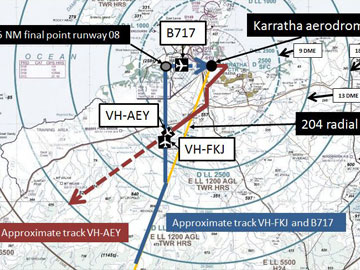
The benefits of having an operational transponder was recently demonstrated when a Fokker and Cessna’s close proximity activated the collision avoidance system.
The incident occurred on 22 May 2013 at Karratha Airport in Western Australia. A Fokker F28-100 was approaching Karratha on a scheduled passenger flight, flying about 10-11 NM behind a Boeing 717. A Cessna 310R was departing Karratha on a charter flight to Exmouth.
Air traffic control (ATC) advised the Cessna pilot of the Fokker’s presence, but made no mention of the Boeing. The Cessna pilot advised ATC that the traffic had been sighted. The pilot was then instructed to pass behind the aircraft and track to Exmouth. The Cessna pilot, believing the aircraft sighted was the Fokker, commenced tracking to Exmouth. The aircraft sighted was in fact the Boeing, which was ahead of the Fokker.
Shortly after, the Fokker’s traffic collision avoidance system (TCAS) activated. TCAS is an aircraft system that monitors the airspace around an aircraft for other aircraft equipped with a corresponding active transponder and gives warning of possible collision risks.
The pilot of the Cessna saw the Fokker approaching about 1 to 2 NM away and above, and descended the aircraft. Meanwhile, the crew of the Fokker complied with the TCAS instruction to climb. The Cessna passed safely about 700 ft below the Fokker, and both aircraft continued to their destinations.
The incident showed not only the benefits of the TCAS, but also highlighted the importance of ensuring that traffic information be relevant and sufficient.
The incident showed not only the benefits of the TCAS, but also highlighted the importance of ensuring that traffic information be relevant and sufficient.
Read the report: TCAS warning between Cessna 310R, VH-AEY and Fokker F28-100, VH-FKJ, near Karratha Airport, Western Australia, on 22 May 2013, which contains links to useful information on Class D airspace and the see-and-avoid principle.


